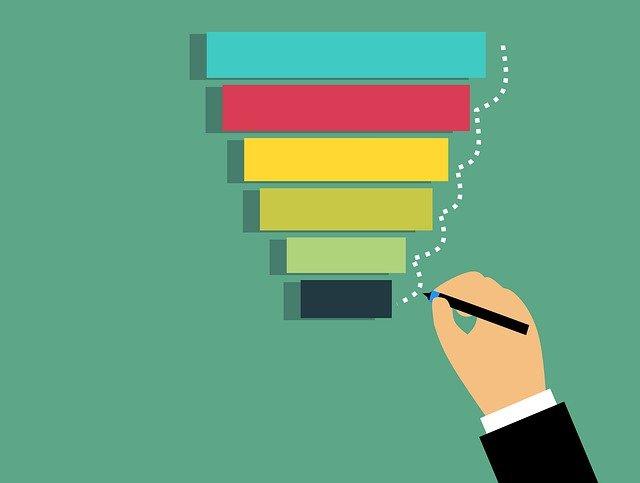
22nd October 2021
What Is A Content Marketing Funnel?
If you work within any marketing discipline, you’ve likely heard of the content marketing funnel. But what exactly is it and why does it matter so much? Let’s take a trip down the funnel together and answer these questions.
What is a content marketing funnel?
A content marketing funnel is a system of content designed to target your customers on their buying journey. Whether they are just beginning to realise their need for a product or they’ve done their research and are ready to press “buy now”, it’s important that your digital presence provides content that will encourage them to take the next step with you.
What are the different parts of the content marketing funnel?
As you’d expect, the funnel is of course shaped like a funnel, and it consists of several parts. Broadly speaking, these are the top, the middle and the bottom, or discovery, consideration and purchase. However, there are several versions of the marketing funnel, including:
- awareness, interest, desire, action, loyalty
- awareness, consideration, conversion, loyalty, advocacy
- awareness, interest, consideration, intent, evaluation, purchase
Image

Essentially, the first part of the funnel aims to attract attention, while the middle parts generate leads and the final stage drives purchases. Any version you use is likely fine as it means you are thinking about the different stages of the customer’s journey and their different needs at each of these times. What’s important is that you recognise the need for different content to target people, raise awareness of your products and services, provide information, and move them onto the next stage.
Why is the content marketing funnel important?
Each stage of the content marketing funnel has its own different goals and will generate different results, and therefore your strategy for each will be different and you’ll need to measure results accordingly. For example, it isn’t very often that informational blog posts generate leads or purchases on their own. It can happen - and it’s great when it does - but that shouldn’t be the yardstick you use to measure your blog post’s success. Instead, when customers are at the early consideration stage and you’re meeting them there with your blog posts, consider what you want them to do next - what would bring them a little closer to making a decision and converting with you - and measure success through that lens.
Another example that highlights the importance of the content marketing funnel is thinking about what your current goals are. If you’re looking to generate more repeat business and loyalty, you’ll need to create content to support this. It would be no good creating content that’s only designed to attract new customers, as this strategy wouldn’t be aligned with your overarching goal. In this instance, you’d need to consider what content would encourage your customers to engage with you again and how you’ll get it in front of them - for example remarketing through display ads or email marketing.
You should also think about how your content at each stage knits together. Are you implementing workflows such as email follow-ups triggered by actions, so that you’re prompting your customers onto the next stage? And when your customer does move from one stage to the next, is your messaging and branding consistent?
Is a marketing funnel the same as a content marketing funnel?
The marketing funnel and the content funnel are essentially the same - the above examples are of marketing funnels or sales funnels. A content marketing funnel layers a content marketing strategy on top of this and specifically explores which content should be at which stage of the funnel, so that whenever the customer is researching, you’re there.
Is it always a funnel or are there alternative models?
The marketing funnel comes under some criticism because the simplified version - discovery, consideration and purchase - doesn’t cover parts of the customer journey such as loyalty and repeat purchases. Plus, people don’t always go from awareness to interest to consideration, and so on - consumers can wander back and forth between these stages before eventually reaching a decision. Marketing Week explains further why the concept of the marketing funnel is somewhat outdated.
Instead, Hubspot suggests the flywheel model. Instead of a linear process, the flywheel consists of attracting, engaging and delighting your customers, promoters, prospects and strangers in a more cyclical way. While in the marketing funnel customers go through the system once and are then appear to be discarded, the flywheel helps us to consider how we can continue to engage with people both before and long after they have become customers.
What content should you use at each stage of the customer journey?
Our blog post “What Content Marketing Types Should You Be Creating?” explains which content types are best for each stage of the buyer’s journey. Plus, Semrush conducted a study to discover how marketers are creating effective content marketing funnels.
If you would like help with any aspect of your content marketing, get in touch with SilverDisc.






